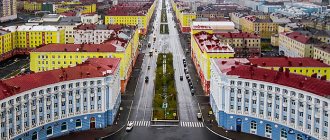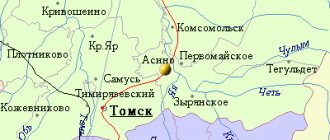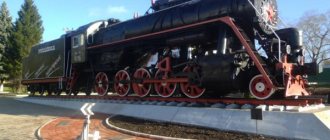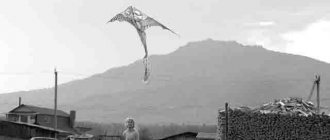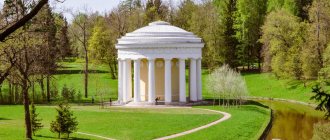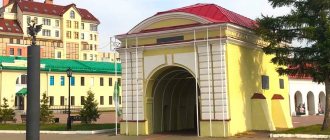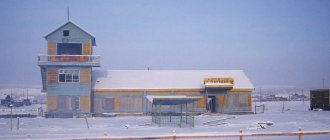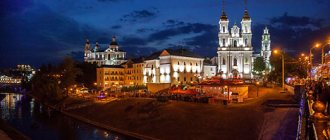Geographical and historical information
In the north of the Krasnoyarsk Territory is the city of Norilsk, which is second after Krasnoyarsk in terms of population. Despite the cold and environmental conditions, up to 182 thousand people live here. This city is the administrative center of the district, but it is known as an industrial one. The weather in Norilsk is cold and harsh.
Note 1
The administration strictly prohibits tourist excursions to the city. Of course, there may be exceptions. In order to visit Norilsk, you need to obtain a special permit. This decision was made only in 2001. Before this, for 10 years, the city was accessible to visitors.
There are five districts in the city, and each of them is different in its structure and purpose:
- Central Market District;
- Kayerkan;
- Talnakh;
- Oganer;
- Snezhnegorsk
The first of them, on the territory of which the main market is located, was built earlier than the others. Interestingly, the residents of the city can thank the Norilka River and the Norilsk Mountains for its name.
Note 2
Being located in a latitude adjacent to Murmansk does not guarantee that the weather of the two cities will match. It is much colder in Norilsk, and the thickness of the frozen rocks is 40-80 meters.
Proximity to the Arctic Circle, the distance to which is 300 km, as well as the North Pole (2400 km) and the Krasnoyarsk Territory (1500 km) create weather conditions that distinguish Norilsk from southern cities. But another feature of its location is the distance and lack of transport accessibility. Access to the cities is possible only through the port of Dudinka, through which land transportation is mainly organized.
Also, goods can be sent along the river. Yenisei, but this path is sometimes closed. Therefore, trade turnover is often carried out through Alykel airport. If people need to fly out of the city or return back, they can also travel through air transport routes. The air quality in Norilsk cannot be ignored. Since the city is industrial, and there are many factories operating in it, the consequences of such urbanization become noticeable every now and then. These are sulfur, phenol, and also heavy metals.
Is it difficult to figure it out on your own?
Try asking your teachers for help
Problem solving Tests Essay Air currents are transferred to Canada, for which Norilsk pays compensation to the maple country. It all started with an expedition in 1920 under the leadership of N. Urvantsev. Geologists first went to Norilsk to investigate the presence of deposits. A year later, a second expedition took place, as a result of which it was decided to build a small house at the foot of the mountain. By 1939, an industrial settlement for workers was located on the site of the future Norilsk.
Until 1953, Norilsk was rebuilt by Gulag prisoners, which allowed it to receive the status of a city. The working prisoners also stayed here, mistaking the new building for their new homeland. By that time, cinemas, hospitals, a sports stadium, secondary educational institutions, and club establishments had appeared on the city's territory.
NORILSK
NORILSK, a city in Russia, in the north. parts of the Krasnoyarsk Territory. Us. 177.3 thousand people (2012; 2nd city in the region after Krasnoyarsk in terms of population). The second city in the world (after Murmansk) in terms of population in the North. Arctic Circle, located 300 km north of it, in the zone of permafrost, on the river. Norilskaya (flows into the Kara m. under the name Pyasina). N. is one of the coldest cities in the world (average air temperatures are negative 8 months a year). It is connected by railway and road to the city of Dudinka (sea and river ports). Alykel Airport (between N. and Dudinka).
In 1919, geologists (N.N. Urvantsev played a key role) discovered the first deposit from the Norilsk group of deposits. In 1921, on the site of the modern one. The first tree was built in N. the house in which geologists spent the winter (now a museum display); later a settlement for geologists was located. In 1935, construction began on the Norilsk Mining and Metallurgical Plant.
Norilsk. Panorama of the city.
plant (now part of the Norilsk Nickel company), which was carried out by Ch. arr. by the forces of prisoners of the Norilsk forced labor camp (Norillag; operated in 1935–56). A village arose near the plant under construction. Norilsk. In 1937, a narrow-gauge railway came into operation. Norilsk-Dudinka village (in 1952 permanent traffic on a regular track was opened, in 1957–98 passenger service was in operation). In 1938–41, the construction of the plant was led by A.P. Zavenyagin: in 1939, Maly Metallurgich came into operation. plant, processing plant and the first nickel was obtained; in 1940, work began on the construction of the open-pit mine Medvezhiy Ruchey; In the same year, construction began on the Bolshoi Metallurgical District. (now Nickel) plant (the first nickel was produced in 1942). In 1939 N. received the status of a workers' settlement. In 1948, the Bolshaya (now Norilsk) enrichment plant was put into operation. factory, in 1949–50 – Copper Plant. In 1948, Special Camp No. 2 “Mountain” was created in Nizhny Novgorod (operated until 1954), in which in May - Aug. 1953 the so-called Norilsk prisoner uprising (suppressed by security forces, army units and volunteers from local communists and Komsomol members). Since 1953 the city. In 1967, permanent railway traffic was opened. line Norilsk - Talnakh. In 1981, construction of the Nadezhda plant was completed (started in 1976, first production in 1979). In 2004, its satellite cities - Kayerkan and Talnakh (both had city status since 1982) were united with N., since 2005 they became adm. districts of Norilsk.
The first general plan of N. (1939–1943, architects G. A. Lomagin, A. E. Sharoiko, V. S. Nepokoichitsky, M. D. Mazmanyan) set the large scale of the first northern. city, but did not take into account the climate. conditions of the North. To the east shore of the lake The center has been paved for a long time. Leninsky Prospect with 5 large open areas [Oktyabrskaya Sq. with houses (1945–1951) and a monument to V.I. Lenin (1954, sculptor S.D. Merkurov), round Gvardeyskaya Square. at the site of the avenue break (1950–55), etc.] and buildings in the style of the Owls. neoclassicism (1947–59, architect Nepokoychitsky). Also built: House of engineers. workers (1941–42), old dramatic building. theater (1954, architect N.I. Mekhanikov). Construction in the 1960s–1970s according to the general plan of 1961 (chief architect since 1943 - Nepokoychitsky; for the introduction of new industrial construction methods in Nizhny Novgorod in 1966 he received Leninskaya Prospekt) eliminated a number of shortcomings of the original plan: new streets are located perpendicular to the prevailing wind direction; their axes are laid with a bend to weaken the force of the wind, and the continuous buildings form closed courtyards, protected from snow drifts; projects of residential complexes with a covered courtyard were created. In the 2nd half. 1950s–1980s built: children's music. a school (1956–59, architects M. D. Mazmanyan, J. K. Trushinsh), a swimming pool (1959, architect Nepokoychitsky) and the Palace of Culture of Mining and Metallurgy. plant (1952–65, architects Nepokoichitsky, L.V. Minenko, G.A. Izrailevich), residential areas of panel houses (1980s) on the site of the old buildings of 1940–45 on Sevastopolskaya Street. Among the buildings of the 1990–2000s: the cathedral in honor of the icon of the Mother of God “Joy of All Who Sorrow” (1991–2003), the Nurd-Kamal mosque (1995–98, architect E. G. Solnyshkin; one of the northernmost in the world ). Monument to the Heroes of War and Labor (1975); a monument to the courage and perseverance of builders N. (2002). Memorial at the site of the Norillag cemetery near Mount Schmidt.
Among scientific institutions - complex magnetic-ionospheric station of the Institute of Solar-Terrestrial Physics SB RAS, n.-i. laboratory of polar medicine SB RAMS, research institute. Farms of the Far North, Siberian Branch of the Russian Academy of Agricultural Sciences (1937, since 1957 in N.). Industrial Institute (established in 1961 as an evening institute, current name since 1991), branches of universities. Museum of the history of exploration and development of the Norilsk industry. district (founded in 1939, opened in 1947, closed in 1965, reopened in 1971, current name since 1984; since 2000 - in the building of the former Lenin cinema, 1950s; on its territory - the first house N., in 2002 moved to its current location), artist. gallery (founded in 1974, opened in 1975). Polar Drama Theater named after. Vl. Mayakovsky (1941; new building - 1986, architects A.V. Chernyshev, V.A. Shikhov, V.M. Bolesin, A.N. Zakharov, V.P. Zezyulya). Since 2004, the annual theater festival “Norilsk Seasons” has been held.
Norilsk. Oktyabrskaya Square. 1945–51. Architects V. S. Nepokoichitsky, L. V. Minenko.
Growing up in the Super League. the mini-football championship is played by the team “Norilsk Nickel” - champion of Russia 2002; hosts rivals at the Arktika Sports Palace (1970, architect M. A. Bitadze; 3 thousand seats).
N. is one of the largest cities. centers of non-ferrous metallurgy. The city-forming enterprise is the Polar Mining and Metallurgical Branch. Norilsk Nickel company (the branch's structural divisions are located on the territory of Norilsk Nickel and in its environs). Copper-nickel ores (16.6 million tons, 2011) are mined at the Oktyabrskoye, Talnakhskoye and Norilsk-1 deposits (7 mines operate); Ore beneficiation is carried out at the Norilsk and Talnakh concentration plants. factories; processing of concentrates, production of refined copper (304 thousand tons, 2011), nickel (124 thousand tons), as well as cobalt, sulfur, sulfuric acid - at Nadezhdinsky metallurgical, Medny (the plant has a metallurgical workshop that produces concentrates of precious metals) metals, metallic silver, selenium and tellurium) and Nickel plants. 3 thermal power plants.
In the vicinity of N., in the village. mountains type Snezhnogorsk, - Ust-Khantayskaya hydroelectric power station (on the Khantayka river, the northernmost hydroelectric power station in the world, capacity 441 MW; supplies electricity, including the enterprises of the Polar Branch of Norilsk Nickel).
In the N. region, one of the most unfavorable environmental conditions in the Krasnoyarsk Territory has developed. situations: complex land disturbance (including mining), air pollution (mainly by sulfur and nitrogen dioxides), water and soil, forest degradation (it is estimated that over 500 thousand hectares of forests were lost in the vicinity of N. , the negative aerotechnogenic impact on forest ecosystems can be traced 200 km from the emission sources).
Climate of Norilsk
The city's location in the Far North and its subarctic climate mean temperatures reach -40° in January. Winters are harsh, windy, cold and long.
It is known that strong winds affect the human body’s perception of temperature. So, in December 1978, the temperature was -47°, which, together with blowing winds of 27 m/s, equaled -101°. That is, for living beings such weather was perceived as such. In Norilsk, wind in winter is a fairly common occurrence.
The cold here lasts 280 days, of which blizzards occur for 130 days. Precipitation lasts 244-277 days. Measurements of the average January temperature showed -39.7°. The peak of the cold was recorded in 1967, when thermometers showed -53.1°.
The premises are heated for 302 days, and there are also polar nights in Norilsk. Its duration is 45 days, and it lasts from November 30 to January 13. Summer lasts from the end of June until the last days of August. But generally, July and August are quite cool. Thus, the average temperature of the second month is +13.6°. But higher rates are also possible. For example, the warmest weather was recorded with a temperature of +32°.
According to forecasters, the average annual temperature is equal to -9.6°. Thus, we can state that the climate of the city is quite cold. The period when frosts disappear is changeable. This weather can last from 53 to 74 days. Norilsk is also famous for its polar day, which lasts 67 days. This “day” starts on May 20 and lasts until July 25. The polar day here begins two days earlier than in Murmansk and ends three days later. Strong winds caused Norilsk to take third place in the list of places with increased windiness. The first two are Dudinka and Vostok station.
Is it difficult to figure it out on your own?
Try asking your teachers for help
Solving problems Tests Essays
With an air humidity of 76% and an average wind speed of 6 m/s, Norilsk is rightfully considered one of the coldest cities. Excessive humidity and rare thaws create a harsh climate. Thus, the cold is observed most of the time; from November to February the city is exceptionally cold. And sub-zero temperatures also reach peaks. Relatively warm weather, namely an increase in temperature above zero, occurs in May-August. Precipitation is also observed in the summer; from July to October it reaches 400 mm.
Truth and myths about Norilsk
Photo: Anatoly Strunin/ITAR-TASS
It's always cold in Norilsk
Myth. It's not always cold in Norilsk.
About 9 months a year. Winter is approximately from mid-September to mid-May. We, in Norilsk, of course, divide this winter into seasons and call it “autumn,” “late autumn,” “early” and “late” spring. But -19 °C, knee-deep snow, wind, winter clothes...
So what am I talking about? A! No, it's not always cold.
There is no summer in Norilsk
Myth. It's summer in Norilsk. But not for long.
Usually in July. Ten days, sometimes a week. What summer is this? Roast: +30–32 °C.
Even +36 °C.
As a rule, summer comes suddenly.
In a couple of hours the temperature can rise by 20 degrees. For example, from +12 °C. Everyone around them puts on shorts and T-shirts, walks around with bare pale legs, and fans themselves with Panama hats. The wind doesn't blow at all, the asphalt melts. But no one is offended. Everyone endures it and tries to jump out into the street and expose some part of their body to the sun.
It often happens that summer arrived while you were at work. So you’re walking down the street in demi-season boots, carrying a jacket under your arm, and the people you meet are naked and wearing flip-flops. And if you look around, it’s immediately clear who is coming home from work, and who has been at home for a long time and has even sunbathed.
In courtyards, snowdrifts often do not have time to melt over the summer. And the layers of ice remain until the autumn rains. You carefully run along them in sandals - and to the sunny side. Everything is fine there.
Sometimes all the warmth ends in three days. The joke “It was summer, but I was working that day” is definitely about Norilsk.
Photo: Alexander Kryazhev/RIA Novosti
You can freeze outside in Norilsk in winter
Is it true . In winter, temperatures drop to –50 °C. And for death from hypothermia -3 °C is enough. So yes, in theory, a person can freeze to death at such a low temperature.
But in practice, life in extreme conditions creates special rules of behavior and norms. The Norilsk residents are clear in this regard, and no one jokes with the frost.
In Norilsk, a stranger will definitely come up to you on the street to tell you that you seem to have frostbitten cheek. If they see that the tip of your nose is white, they will definitely tell you or even rub it with a mitten. And, of course, a complete stranger, a complete stranger, maybe even an unpleasant, tipsy person would never be left on the street. They will take you to the entrance or store to warm up, or they will call a taxi and send you home.
In Norilsk, snow is not cleared from yards
Is it true. Here's the thing... In Norilsk, the phrase “snow has fallen” and “they are clearing the snow” means something completely different from what it does in Moscow.
In Norilsk these are snowdrifts. Straightaway. Knee-deep and above. And tomorrow there will be as much more snow. And the day after tomorrow. And so every day for the next six months. The snow doesn't melt. Due to the low temperature and strong wind, it becomes dense, hard, compacted, and sticks together not into lumps and snowballs, but into snow-stone blocks. The fallen snow remains in the yards. Only roads, sidewalks, and entrance passages are cleaned. After a snowstorm, this is done not by a janitor with a shovel, but by a healthy tractor.
Norilsk does not use chemical reagents to combat ice
Is it true. In Norilsk no one knows what chemicals are. Here they are not used to deal with snow and ice. That is, never at all.
To prevent slippery conditions, the roadway and sidewalks in Norilsk are sprinkled with slag. Slag is rock waste. Empty, light, black creaky crumb. Doesn't look very good. Sometimes visitors ask in horror: “Is it really the harmful emissions from the plant that have settled on the snow?” But in fact, this thing does not harm health, dog paws, shoes, or car tires at all.
Everyone in Norilsk knows how to ski and skate
Myth. It’s a pity, but traditional winter sports in Norilsk cannot be called “cult”, “folk” or “a favorite pastime of city residents”.
Photo: Alexander Kryazhev/RIA Novosti
Deer walk the streets in Norilsk
Myth. They don't go. Reindeer are brought by helicopter from the tundra for the Bolshoi Argish holiday. For beauty, creating an atmosphere and taking pictures.
In Norilsk they eat raw fish
Is it true. There is a dish called sagudai - it is made from raw fish: whitefish, muksun or omul. Delicacy and deliciousness. Served in the best restaurants in the city. But no matter how hard I tried to involve my non-Norilsk friends, they are there, and some can’t even just look at him. This is a northern dish. And it is completely different from, for example, Japanese sashimi.
There are no trees in Norilsk
Myth. There are trees in Norilsk. These are numerous trees in the apartments of city residents. What ficuses! And what palm trees! And what lemons are grown in offices!
As for the trees on the streets... well, actually, there are some too. They're just dwarf tundra trees. They look more like bushes. So our trees are bushes on lawns.
Photo: Ekaterina Frolova
Norilsk is similar to St. Petersburg
True (if you're a romantic). In order to see that Norilsk is similar to Leningrad - it was always about the architecture of Leningrad - you need to go to Oktyabrskaya Square, go into the arch of one of the houses: Lenin, 1, or Lenin, 2 (they are located opposite each other), look at the opposite side and slightly up and smile.
There are no basements in Norilsk houses
Is it true. Let’s just say that in Norilsk they call “the basement of a house” completely different from what people on the mainland do.
Buildings in Norilsk are built on concrete piles. No one digs a pit, therefore, there are no basement floors or basements; Norilsk residents have no opportunity to store potatoes and onions or a bicycle in the basement of the house.
What is called a “basement” in Norilsk? This is the space between the floor of the first floor and the ground, another one and a half to two floors high. Everything is arranged in such a way that the wind blows under the house and the frost freezes everything properly. And it was by no means warm. All this is to ensure that the permafrost into which the piles are driven does not thaw.
And yet in Norilsk there are two houses with real basements. They were built in the 50s. Real bomb shelters were organized there in case of war.
There are no inedible mushrooms in Norilsk
Is it true. Yes, in order. In Norilsk, or rather, outside the city, mushrooms grow. Yes its true. In the summer, Norilsk residents go to the tundra to collect these mushrooms. Also true. Inedible mushrooms do not grow in the tundra. However, there are no white boletuses, boletuses, or boletuses either. But any volushka and russula can be eaten.
Norilsk can only be reached by plane
Myth. Nonsense! For example, you can travel by train from Moscow to Krasnoyarsk - 4165 km, three days. Then from Krasnoyarsk by boat to Dudinka - 1989 km, four days. And from Dudinka it’s a stone’s throw to Norilsk by car - 90 km, an hour and a half. True, such a trip can only be made in the summer, when navigation is open on the Yenisei. In winter, ships do not operate. In winter - only by plane. The flight from Moscow is 4 hours.
Photo: Ekaterina Frolova
In winter it is always polar night
Myth. The polar night lasts only 45 days. Starts on November 30th and ends on January 13th.
To be honest, you don’t feel it coming at all. Day X is no different from the previous one. This is because by this time the “twilight” nights have already lasted for a month. The day is gradually getting shorter. Electric lights are always on in apartments and offices. The streets are very well and beautifully lit - you don’t seem to notice anything like that. You live for yourself, you live. You just don't get enough sleep. You get tired. There is some kind of emotional tension.
During the polar night, “daytime” lasts only an hour. However, it is impossible to spend even this hour without turning on the lights in the apartment.
After the polar night there are another 30 days of gray twilight. But when in February the sun appears for the first time for 5 minutes. ABOUT! Yes! This is where you understand everything about the polar night! You understand how lousy it was, how difficult it was without the sun, how incredibly powerful the fatigue turned out to be.
It is very difficult for a person to live without the sun.
And the polar night is the only natural phenomenon to which the body does not get used. That is, every year there is the same amount of fatigue, no habit.
In Norilsk in winter, people eat ice cream on the street
Is it true. Yes. Why not. Both at –24 °C and at –26 °C it is quite possible to eat ice cream on the street. But! Only if there is no wind. If there is wind, nothing will work.
In summer, when you swim in the lake, you cannot stand on the bottom
Is it true. Norilsk residents love to relax at camp sites outside the city. And everyone, of course, knows that even on the hottest summer day there is ice at the bottom of any lake in the tundra. The water has time to warm up and you can swim in it. But the bottom remains icy. So it’s better not to get up to the bottom. You'll freeze everything off.
Photo: Ekaterina Frolova
Norilsk never sleeps
Is it true. This is not a figurative expression. “Never sleeps” - literally. Norilsk Nickel enterprises operate in three shifts. Production never stops. Therefore, in the city at any time of the day there is someone who is going to work, and someone who has just come from work. There is always a light on in someone's window, someone is driving past on a bus or in a taxi. A couple of grocery stores and many 24-hour flower shops are definitely open. In this sense, little Norilsk lives the habits of a metropolis rather than an average Russian city with a population of up to 200 thousand people.
In winter, you won’t be allowed to leave the city by car unless you show the traffic cop a shovel.
Is it true. From Norilsk to Kayerkan, which used to be a separate city, and is now officially considered a district of Norilsk, can be reached by car in 25 minutes. From Norilsk to Dudinka in 1.5–2 hours. The road is straight, level, on both sides of the road there is nothing: a plain, a snowy desert. And if the wind suddenly blows and a snowstorm begins, this snowy desert takes over the road in a matter of minutes. The barriers instantly hide the asphalt, landmarks disappear, and the driver loses direction. In this case, you cannot go further. Cars stop at the side of the road and wait for a tractor to come pick them up. Sooner or later the tractor appears. He makes his way along the swept track. This is where drivers need a shovel: while you are standing in a snowstorm, the car is swept up to the windows.
Students do not go to class for half the school year
Is it true. We're talking about younger schoolchildren. Norilsk meteorologists created a special table many years ago. It includes indicators of air temperature and wind strength at which it is dangerous for children to be outside. For example, the temperature itself is -36 °C degrees and is completely safe. But if the wind is 20 meters per second, it is better not to let the child out of the house. Meteorologists look at the table, and if the wind/temperature indicators are alarming, they call the day activated, or activated. There is a gradation according to which activation is announced for elementary grades, for junior and middle grades, and when the elements are really raging, no one goes to school.
Norilsk Nickel employees travel to work in convoys
Is it true. During strong winds or a serious snowstorm, roads are closed and vehicles do not operate. Getting to work is not an easy task. An option for this case was invented a long time ago: columns of buses are formed. First, a couple of bulldozers are walking along the road - they are clearing the snow, then a traffic police car with a flashing light, then a column of buses. On buses, Norilsk Nickel employees look out the windows. They contain all white milk.
House numbers are written on buildings in two-meter digits
Is it true. They do this because in a snowstorm it is not always possible to get a closer look at the number.
And huge numbers can be seen from afar. All nine-story panel buildings in Norilsk are numbered like this. Photo: Pavel Lisitsyn/RIA Novosti
Enterprises of Norilsk and the city-forming sphere of activity
About half of the city's residents work at mills and factories that are part of. It includes the Nadezhdinsky Metallurgical Plant, as well as copper and nickel plants. The company is a mining and metallurgical company. This is the main complex around which all the city's activities are built. It is not for nothing that it is called a “calling card”, although visits, as we have already said, are limited here.
But the location of the enterprise is not entirely favorable. Wind from any direction brings sulfur, phenol and heavy metals directly into the city. Acid rain is not uncommon here, and houses are covered in industrial dust. The waste here exceeds the emissions of Western European countries combined. For example, about 2.4 million tons of sulfur antigrid evaporate into the air when working with Talkhan ores.
This amount of waste significantly pollutes the environment and affects public health. 10 MPC is a fairly significant figure showing the content of sulfur dioxide in the air. And although carbon dioxide from Norilsk CO2 emissions is 2%, there is severe water pollution in this area. Some emissions simply end up in lakes, and the rivers have long since lost their former living creatures.
Despite so much dirt in the air, smog is not typical for Norilsk. The wind blowing from the north carries all the dust outside the city. It also settles there, but is not carried into the Arctic Ocean. Instead of water, the tundra and forest-tundra are polluted, and an incredible amount of emissions are absorbed by the soil. It is prohibited to pick berries and mushrooms in Norilsk; they contain dangerous amounts of copper and cadmium. In addition, people cannot drink tap water because it is unfit for consumption. According to environmentalists, the city's pollution has long exceeded all limits.
